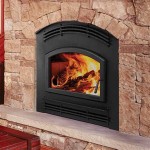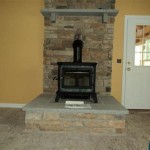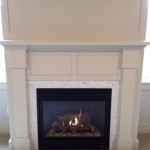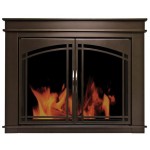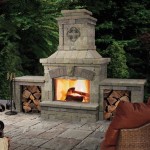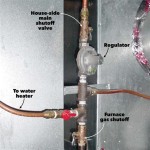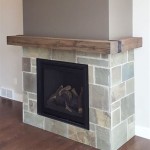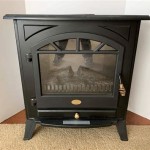Converting Gas Fireplace To Wood Stove Insert: Essential Aspects
Converting a gas fireplace to a wood stove insert can significantly enhance your home's warmth, ambiance, and efficiency. However, it's crucial to approach this conversion with proper planning and execution to ensure safety and optimal performance.
1. Feasibility Assessment:
Before embarking on the conversion, thoroughly assess your fireplace's suitability. Ensure it has a suitable chimney with a proper liner and sufficient height for proper draft. Additionally, inspect the hearth and firebox for cracks or damage that may need repair.
2. Choosing the Right Insert:
Selecting an appropriate wood stove insert that fits the dimensions of your fireplace opening and provides the desired heating capacity is essential. Consider the size of the room, insulation level, and heating requirements to determine the appropriate BTU output.
3. Gas Line Removal and Modification:
Disconnect and remove the gas line from the fireplace after turning off the gas supply. Seal any openings where the line previously entered to prevent gas leaks. Adjust the gas valve to prevent accidental gas flow and consult a licensed plumber for further safety measures.
4. Installing the Wood Stove Insert:
Install the wood stove insert according to the manufacturer's instructions and local building codes. Secure the insert in the fireplace opening using the provided brackets or support system. Ensure proper clearance from combustible materials, including the walls, ceiling, and hearth.
5. Chimney and Draft:
Connect the insert to the chimney using a stovepipe and ensure a tight fit to prevent leaks and reduce creosote buildup. A properly functioning draft is essential for efficient burning, so verify that your chimney has a good draft before operating the insert.
6. Hearth Extension and Safety:
In some cases, the existing hearth may not meet the required safety distances for wood stoves. Extend the hearth using non-combustible materials like tile or stone to provide adequate protection against flying embers and heat.
7. Safety Precautions:
Always follow the manufacturer's instructions and adhere to safety guidelines when operating the wood stove. Keep the insert's door closed during operation, use dry seasoned firewood, and never leave a fire unattended.
Conclusion:
Converting a gas fireplace to a wood stove insert requires careful planning and proper execution to ensure safety and optimal performance. By following these essential aspects, you can effectively transform your fireplace into a cozy and efficient heat source for your home.

Gas To Wood Fireplace Conversion Overland Park Ks Firplace Service

Want To Convert Gas Wood Fireplace Full Service Chimney

Want To Convert Gas Wood Fireplace Full Service Chimney

Wood Burner Conversion New Jersey Fireplaces Kjb

Convert Gas Fireplace To Wood

Convert From Wood To Gas With A Insert The Kernel Burner

Convert To Gas Installing Fireplace Inserts Doctor Flue

Can A Wood Burning Fireplace Be Converted To Gas The Flame Company

Wood To Gas Fireplace Conversion In Wisconsin Free Quote Badgerland Waesha

Fireplace Insert Guide Fireplaces Direct Learning Center
Related Posts

